Charles McKenzie was a clerk for the North West Company assigned to the Knife River Villages in the winter of 1804–05. His journal provides useful information about the Missouri tribes as well as the expedition’s stay at Fort Mandan. Several excerpts are included on this site.
Related Pages
November 8, 1804
Riving cottonwood logs
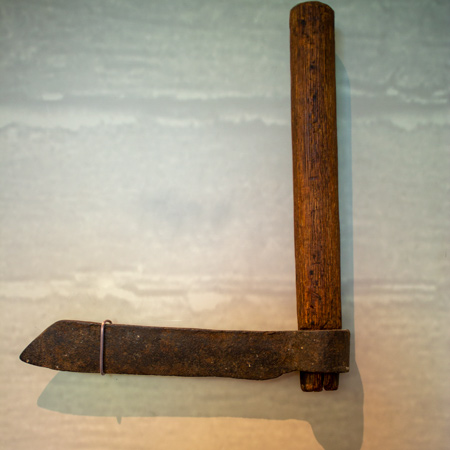

Sgt. Ordway is hopeful that their cottonwood logs will rive well—split into boards. He reports that they will have to give up on that plan. Traders from Canada arrive at the Hidatsa villages.
November 27, 1804
Mandan deceptions
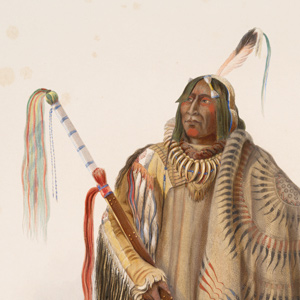

Lewis returns to Fort Mandan with two Hidatsa chiefs, and the captains learn that the Mandans have been telling lies to the Hidatsas. Seven Canada-based traders arrive at the Knife River Villages.
January 3, 1805
A safe refuge
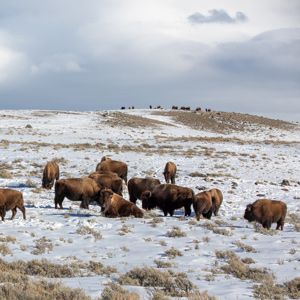

A Hidatsa man comes for his wife who is seeking refuge at Fort Mandan, and hunters return with a white-tailed jackrabbit. Charbonneau and one enlisted man arrive late at one of the Hidatsa villages.
January 18, 1805
The "Brarow" (badger)


At Fort Mandan, two traders staying at a nearby Hidatsa village visit the captains. Hunters bring in four wolf skins and a badger, the latter identified by the visitors as a “brarow”—a badger.
January 19, 1805
Fort Mandan departures
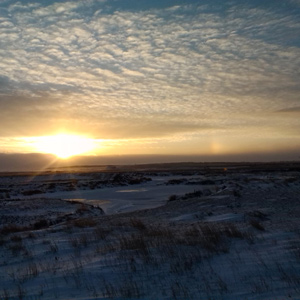

At Fort Mandan below the Knife River Villages, one of the interpreter’s wives leaves after a jealous spat. Two North West Company traders leave, and Clark offers to care for and protect their horses.
February 9, 1805
Climbing the back wall


Pvt. Howard climbs the wall and for his offense is placed under military guard. Clark turns his hunting party around and camps about 40 miles south of the Knife River Villages.
February 10, 1805
Howard's court-martial
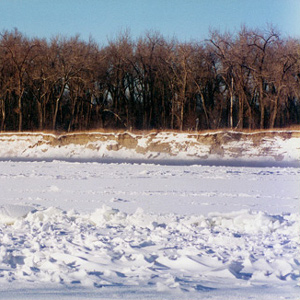

At Fort Mandan, Pvt. Howard’s sentence of 50 lashes—given for climbing the back wall—is forgiven. Away from the fort, Pvt. Joseph Field, a member of Clark’s hunting party, suffers frostbite.
February 17, 1805
Deer and elk
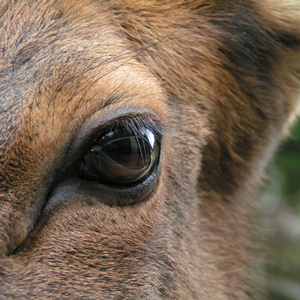

Lewis’s hunting party finds elk and deer as they work their way back to Fort Mandan below the Knife River Villages. At the fort, The Coal of Mitutanka and Charles McKenzie visit with Clark.
February 18, 1805
Map making
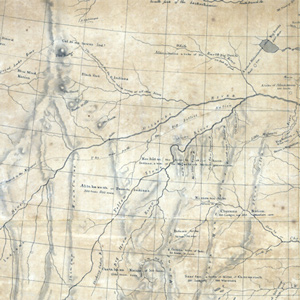
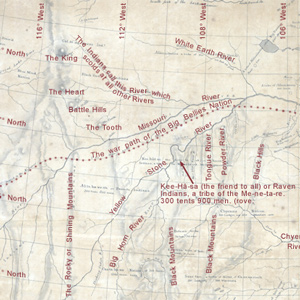
At the Fort Mandan, Clark works on his list of tributaries to the Missouri and Yellowstone rivers. Several miles south, Lewis and his hunters butcher and haul elk and deer meat to secure it in a pen.
March 9, 1805
Grand Chief Le Borgne
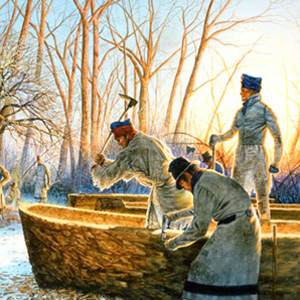

Le Borgne pays his first visit to Fort Mandan where the captains try to impress this important Hidatsa chief. Despite Lewis’s efforts, he leaves with disdain for all except the blacksmith and gunsmith.
March 13, 1805
Busy blacksmiths
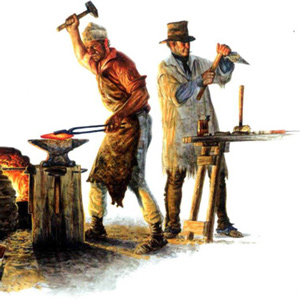
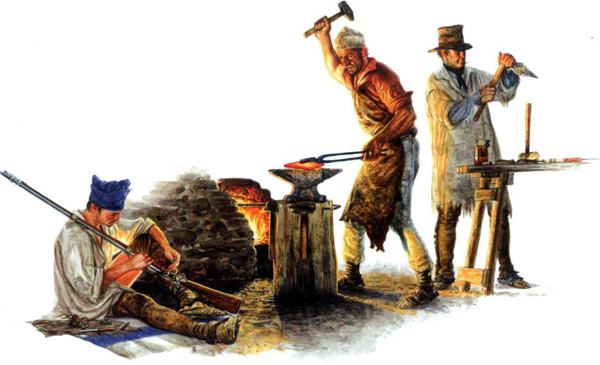
At Fort Mandan below the Knife River Villages, the Mandans and Hidatsas are anxious for the blacksmiths to make war axes before the expedition leaves for the Western Sea. North West Company traders visit.
March 14, 1805
Charbonneau moves out
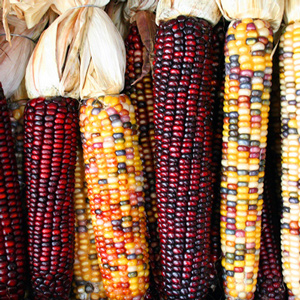

Interpreter Toussaint Charbonneau terminates his employment and moves out of Fort Mandan with the intent to return to his Hidatsa village. The enlisted men are tasked with shelling corn.
March 22, 1805
Man Wolf Chief visits
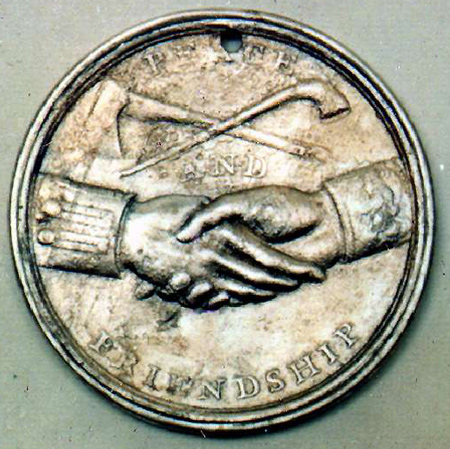

At Fort Mandan, Man Wolf Chief of Menetarra is given the standard diplomatic treatment: an Indian peace medal, gifts, and a speech. Engagé François Rivet comes for his canoe.
March 23, 1805
A Hidatsa vocabulary
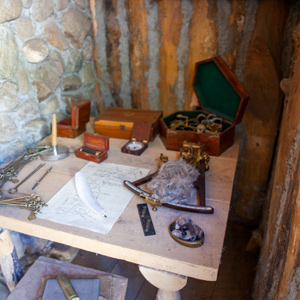

Fur trade clerks Charles McKenzie and François-Antoine Larocque end their visit at Fort Mandan in present North Dakota. A Hidatsa man helps the captains record a vocabulary of his language.
April 4, 1805
McKenzie's recollections
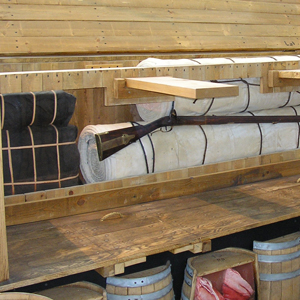

At Fort Mandan, the barge is loaded and made ready for its return to St. Louis. Interactions with Canadian traders François-Antoine Larocque and Charles McKenzie are recalled by McKenzie several years later.
August 11, 1806
Cruzatte shoots Lewis
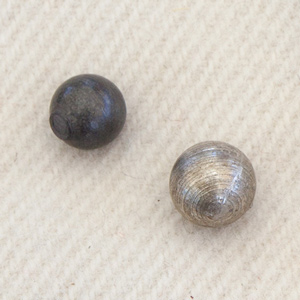

Lewis is shot through the buttock. An Indian attack is suspected, but likely Pvt. Cruzatte mistook him for an elk. Clark meets fur traders who share news of the barge, the fur trade, and Indian wars.
Experience the Lewis and Clark Trail
The Lewis and Clark Trail Experience—our sister site at lewisandclark.travel—connects the world to people and places on the Lewis and Clark Trail.
Discover More
- The Lewis and Clark Expedition: Day by Day by Gary E. Moulton (University of Nebraska Press, 2018). The story in prose, 14 May 1804–23 September 1806.
- The Lewis and Clark Journals: An American Epic of Discovery (abridged) by Gary E. Moulton (University of Nebraska Press, 2003). Selected journal excerpts, 14 May 1804–23 September 1806.
- The Lewis and Clark Journals. by Gary E. Moulton (University of Nebraska Press, 1983–2001). The complete story in 13 volumes.

